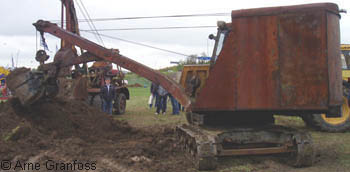Prewar diplomacy

 UNDER CONSTRUCTION Version 0.22
UNDER CONSTRUCTION Version 0.22
|
Sweden in World War II - across borders
|
 |
![]()
![]()
The Nordic foreign ministers meet in Stockholm on 9 May 1939, and agree to use neutral politics [s04]. Denmark and Norway had declared themself as neutral already in 1936 [s10].
On 17 May they give their answer to a German proposal for a non-aggression pact. Denmark is willing to do so. Finland, Norway and Sweden see it as unnecessary. [s04]
During the summer of 1939 also the Soviet Union had offered the four Nordic countries a pact, Only Denmark felt a need to accept. Finland and the Soviet Union had a non-aggression pact with the Soviet Union from 1932, renewed in 1934 and valid until the end of 1945. [s10]
There were groups in Finland that were active with anti-Russian propaganda and other activities based on the countries earlier history. [s10]
In 1939 Finland tried to get permission to fortify Åland (Finnish islands between Finland and Sweden), but the Soviet Union opposed it even though they were not a part in the Åland-agreement (from earlier history). [s10]
In January 1939 Finland and Sweden agreed to fortify Åland together. In May the issue was discussed by the League of Nations where the Soviet Union opposed to this, and Sweden decided not to participate in the fortification. Finnish troops were stationed on Åland from early October 1939. [s58]
There was a fear that the Soviet Union had plans to reach the Atlantic coast by military force.
![]()
In the discussions about a three nation alliance between Britain, France and the Soviet Union, the latter presents on 5 June a condition that they have the right to intervene Baltic Sea nations in case of broken neutrality. Britain and France accept a 'compulsive guarantee' on 27 June. [s04]
![]()
On 1 September 1939 the German foreign office sent a message that Germany would respect the sovereignty of Finland, Norway and Sweden, with the only demand that all these countries remained neutral. [s43].
![]()
The Danish, Norwegian and Swedish emissaries in Moscow presented a statement, that the governments took for granted that Finlands independence and neutrality would be respected. [s19]
On 19 September 1939 the Nordic foreign ministers sends a communiqué that confirms the decision to be neutral [s04]. A meeting on 18 October 1939 between the four Nordic countries kings and foreign ministers resulted in a statement where they demanded that their neutrality should be respected [s19].
12-14 October negotiations were held in Moscow between Finland and the Soviet Union about the Soviet proposal for a mutual assistance treaty. (One part was that Finland could be allowed to fortify Åland, but not together with any other nation.). Finnish contacts made it clear that they could not expect military assistance from neither Sweden nor Britain or Germany. [s58]
![]()
Estonia was forced to agree to a military alliance with the Soviet Union in 1939, including Soviet establishment of naval bases and airports along the Baltic Sea. [s04]
![]()
After a meeting with the Danish, Norwegian and Swedish foreign ministers 25 February 1940 they presented a request to the belligerents to stop the laying of mines and to use a less brutal warfare.
By then the four Nordic countries had lost some 100 ships and 1000 crew due to German attacks and mines. [s19]
![]()
2012-08-28. www.granfoss.se. Text/pictures: Arne Granfoss